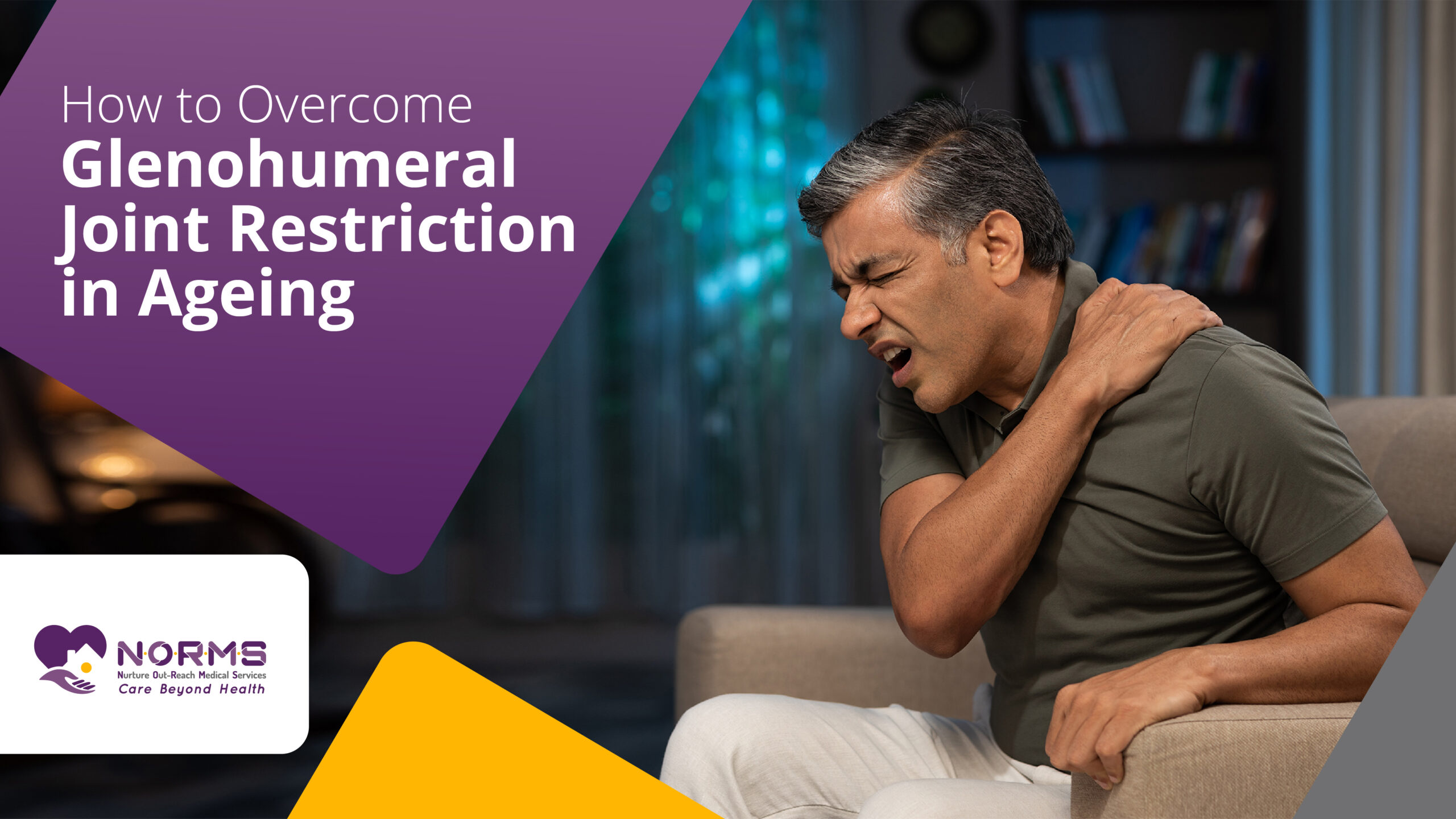
Changes affecting the musculoskeletal system may occur as we grow old because the body is differently organised. With ageing, one can find the limited movement of the glenohumeral joint, thereby causing pain, stiffness in the shoulder, and less movement range.
The successful means behind the chronicle case of the glenohumeral joint restrictions necessitates holistic thinking alongside the reasoning that one should include exercises and other lifestyle modifications, and in some instances, medical/intervention approaches. This article will reveal some approaches which focus on stretching the glenohumeral joints to relieve restriction in older people and increase shoulder function.
X-ray is used in diagnosis of glenohumeral joint restriction in older patients in order to check both bone and soft tissue.
The glenohumeral joint (commonly called shoulder joint) is a very movable complex joint because of the articulation of the humerus (arm bone) with the glenoid fossa of the scapula. With ageing, several factors contribute to the restriction of this joint.
Slowly, that covering which protects the surfaces of the joint may come down and cause osteoarthritis. This degeneration is liable to cause inflammation, pains and stiffness , so the shoulder movement becomes really limited.
Sarcopenia, owing to muscle loss and weakened muscles from rotator cuff, disturbs shoulder stability and functions. In addition, parity in muscles’ strength can cause joint tightness to increase.
The poor posture common for sitting for long periods or maintaining a sedentary lifestyle can develop muscular asymmetries and biomechanics changes that instead of supporting the joint and its tissues overload them.
Tension in the shoulder muscles, tendons, and ligaments that surround the joint, commonly resulting from lack of flexibility or prior injuries, can literally keep the squeeze and the joint motion, causing the joint stiffness.
In addition to performing the exercises like pulling the arms in front of the body and pressing the shoulders backward, there are many more exercises like internal and external rotation exercises targeting the rotator cuff muscles by using resistance bands or light weights that help significantly in improving the stability and also the shoulder function.
Not only the incorporating of protocol for the stretching of shoulders but also into the routine for the improvement of the shoulder flexibility and range of motion is a must. Put the Program on the chest, shoulder, and upper back stretches to remedy tightness and improve mobility.
A good posture, performing exercises to strengthen the muscles that support it, the upper back and the core muscles, can help to increase the stability or avoid the strain of the shoulder which is from the work.
One of the advantages of working with a physical therapist is that they can come up with an exercise plan which is suitable for the needs of a given person and that is meant to increase shoulder strength, body flexibility and function.
The hands-on performed techniques, for example, joint mobilizations, soft tissue mobilisation, and therapeutic massage, can also be added to improve joint mobility and stomach strains.
Pursuing massages, therapy, or playing sports like swimming, can allow you to learn various new sentences and words.
Managing the size of one’s body and physical activities performed regularly may have the effect of minimising the symptoms of joint restriction associated with glenohumeral joints and enhancing the overall health of the joint.
In the cases where it is not about conservative treatments for providing the relief, steroid injections or hyaluronic acid ones are an alternative to reduce inflammation and pain.
When protracted glenohumeral joint restrictions cannot be improved through physiotherapy, extended glenohumeral joint release or joint replacement surgery may be necessary to relieve symptoms and bring back function.
Such a condition known as glenohumeral joint restriction has shown common occurrence among elderly people, negatively affecting shoulder functioning and aspect of life quality. Nevertheless, effective strategies and techniques are available to aid in overruling these issues, thus improving mobility and functioning. Engaging in exercises, stretching, physical therapy, lifestyle altering and, if required, medical intervention individuals can violate restriction of glenohumeral joints and ensure a good active life for themselves.
The causes of shoulder pain can be as varied as the sources of pain, ranging from an accidental trauma to an inflammatory response or degenerative conditions like osteoarthritis. Consult a doctor of medicine for confirmation of disease and the right therapy plan.
Notwithstanding, the exercise has a big role to play in the recovery of shoulder function and mobility. However, the possibility of restoring the glenohumeral joint could be determined by the specific underlying factors including the gravity of the problem and how each patient responds to treatment.
It’s highly recommended to choose those exercises or movements carefully that do not at all provoke shoulder pain or irritation. Having tried once again a workout with such activities as repetitive overhead movements or heavy lifting, will definitely make the symptoms worse. Thus, this kind of activity should be considered with care.